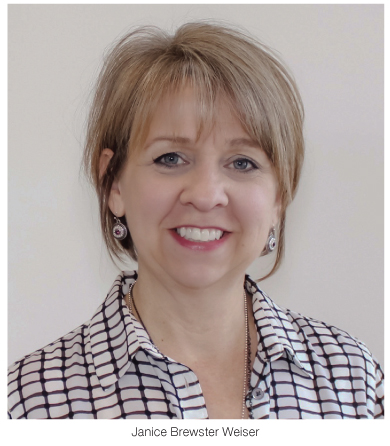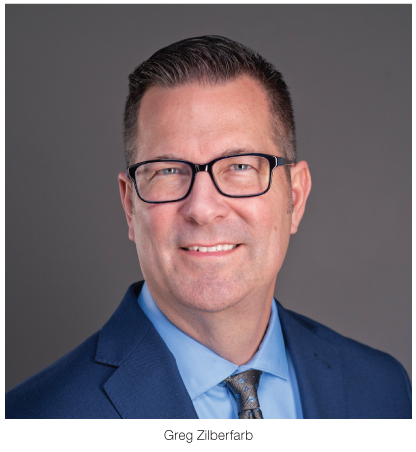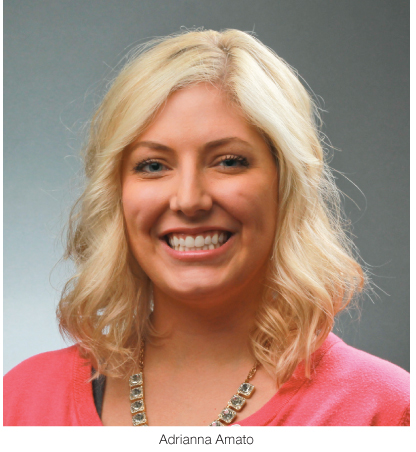Wednesday, May 13, 2020
The coronavirus pandemic has changed life dramatically in countless ways. As many propane employees are adapting to safe social distancing while continuing the frontline work of delivering propane and taking care of customers, other industry members who work more behind the scenes in offices have been sent home to work in compliance with stay-at-home requirements for employees.  There are some in the propane industry who have been working at home for a number of years, including the entire staff of TSN Communications, a public relations firm that serves quite a few propane clients. TSN Communications’ clients include the Propane Education & Research Council (PERC), ROUSH CleanTech, Superior Energy Systems, Blue Bird, and the propane associations of Missouri, Illinois, and Virginia. According to TSN Communications’ president and CEO Greg Zilberfarb, 14 of the firm’s employees now work from home in Virginia, Texas, Arizona, Illinois, Montana, Florida, Pennsylvania, and Ohio.
There are some in the propane industry who have been working at home for a number of years, including the entire staff of TSN Communications, a public relations firm that serves quite a few propane clients. TSN Communications’ clients include the Propane Education & Research Council (PERC), ROUSH CleanTech, Superior Energy Systems, Blue Bird, and the propane associations of Missouri, Illinois, and Virginia. According to TSN Communications’ president and CEO Greg Zilberfarb, 14 of the firm’s employees now work from home in Virginia, Texas, Arizona, Illinois, Montana, Florida, Pennsylvania, and Ohio.
Putting Experience Into A Book
Janice Brewster Weiser, who began working from home in 2000, joined TSN Communications in 2015. “I was working at a job I loved before [working at home], but my commute ate up three hours a day and telecommuting wasn’t an option,” Weiser stated in a book she authored recently: “Work at Home Happy,” which is available in an e-book format via Amazon. “As a new mom, I wanted a different life. So, I wrote my resignation, signed on to work remotely for a dot-com across the country, and set up an office in my home. Since then, I’ve worked as a full-time telecommuter and as my own boss, freelance writing and editing for a wide range of clients.”
With many years of experience performing her job from her home office, Weiser decided to write a book advising others who may find themselves with the opportunity to work at home. “I believe in writing about what I know,” she explained. “There are many people working at home for the first time right now. It can be fun and rewarding with a lot of flexibility, but there can be a lot of distractions to keep in check.” She noted that 1.8 million people worked at home at least part-time in the United States in 2005, but that the number had more than doubled to 4 million even before the coronavirus forced many more to change their working arrangements. “I tapped experts for advice, surveyed other teleworkers, and mined books and articles to gather 101 tips to make working from home the best possible option for you.”
The book’s four chapters tackle major aspects of working from home. The first chapter, “Happy Space,” discusses key aspects of the at-home work environment. Keeping kids’ belongings and other household items from cluttering the work desk is the first of many nuggets of advice. Further advice includes details on computer technology without corporate technical support at your fingertips; ergonomics for comfort and efficiency; using space efficiently; and keeping others in the house from being too much of a distraction. Looking and feeling healthy is encouraged, especially as video communications allow for plenty of visual interaction with the outside world.
“Getting it Done,” the second chapter, focuses on productivity. “For me, working at home motivates me to get work done so I can spend more time doing other things for myself and my family,” Weiser said. With advice from many, she acknowledges that some of the tips in Chapter Two may be contradictory and readers will need to decide which of the tips and ideas work best for them personally. One idea is to choose one important thing to focus on each day and see it through to completion. Others include blocking out the home distractions, writing down distractions in a journal to focus on later, keeping to-do lists on index cards, taking a 10- to 20-minute nap to refresh, avoiding social media becoming a distraction, and moving deadlines up a week to be prepared for unexpected demands on your time. She stresses that when working at home it is still important to get dressed and ready for work, the same as going to an office full of people.
In chapter three, “Happy and Healthy,” Weiser shares tips on making the work-at-home experience happy and healthy considering all the life challenges faced daily from both work life and personal life. Tips include meditation techniques, balancing time spent working with social and fun activity, setting aside a two-hour period each week just to think, taking a break from your home office midday for an activity outside the house, taking time to do activities that raise the heart rate, and taking time to interact with others socially. She notes that some who work at home enjoy having regular social outings with others who also work at home. “Work Like a Boss,” the fourth and final chapter, focuses on increasing productivity and profit. With multiple clients, Weiser notes that workload can often be feast or famine. She discusses ways to fill downtime by increasing future projects. For those who are self-employed, she stresses the importance of being aware and on top of keeping the project pipeline full and doing all billing and tax work on a schedule to keep money flowing in.
“Work Like a Boss,” the fourth and final chapter, focuses on increasing productivity and profit. With multiple clients, Weiser notes that workload can often be feast or famine. She discusses ways to fill downtime by increasing future projects. For those who are self-employed, she stresses the importance of being aware and on top of keeping the project pipeline full and doing all billing and tax work on a schedule to keep money flowing in.
Takeaways for TSN Team
In a discussion with BPN, Zilberfarb and fellow staff member Adrianna Amato joined Weiser to talk about the ideas shared in “Work at Home Happy” and how they apply them in their daily work. “For me, the tips on the height of computer monitors in relation to eye level have been very helpful,” Zilberfarb said. “With as much time as a person can spend at the desk each day, a few simple adjustments can prevent a lot of long-term neck pain.” “The tips about setting up the workspace are very important,” Amato said. “They really help me get in the work mindset. Also, getting dressed each day and not just working in jammies really helps me be more productive.”
“The tips about setting up the workspace are very important,” Amato said. “They really help me get in the work mindset. Also, getting dressed each day and not just working in jammies really helps me be more productive.”
Weiser cites one of her tips that came from Francesco Cirillo in his book, “The Pomodoro Technique,” as a very useful technique for her. She sets a timer for 25 minutes to focus solely on a task at hand and then allows five minutes for a break. The name of the technique came about as Cirillo’s timer was shaped like a tomato, a “pomodoro” in Italian.
As for working as a group, Zilberfarb has been pleased with the low turnover of staff and the communication within the team at TSN Communications. He notes that about 11 staff members are full-time employees and three work part-time as outsources who receive a 1099 tax form. Weiser and Amato both cited Basecamp and Google Docs as online software programs that help TSN Communications’ team stay connected and efficiently share information. “Often we can communicate electronically, but it is also good to just pick up the phone and talk sometimes,” Weiser added.
Zilberfarb said the TSN Communications team and spouses or significant others get together once a year in Virginia for meetings and social activities. “It’s always good to have face-to-face time within our group,” Zilberfarb said. “I’m glad everyone can work in a home environment that agrees with them, but still have a way to communicate effectively with each other.”
Recently Weiser and TSN Communications offered free downloads to recipients of the TSN Communications’ newsletter for a five-day period and 241 people took them up on the offer. Books are now available for a nominal charge via Amazon.
“Work at Home Happy” by Janice Brewster Weiser is available at http://amzn.com/B07C6LM58J — Pat Thornton

Putting Experience Into A Book
Janice Brewster Weiser, who began working from home in 2000, joined TSN Communications in 2015. “I was working at a job I loved before [working at home], but my commute ate up three hours a day and telecommuting wasn’t an option,” Weiser stated in a book she authored recently: “Work at Home Happy,” which is available in an e-book format via Amazon. “As a new mom, I wanted a different life. So, I wrote my resignation, signed on to work remotely for a dot-com across the country, and set up an office in my home. Since then, I’ve worked as a full-time telecommuter and as my own boss, freelance writing and editing for a wide range of clients.”
With many years of experience performing her job from her home office, Weiser decided to write a book advising others who may find themselves with the opportunity to work at home. “I believe in writing about what I know,” she explained. “There are many people working at home for the first time right now. It can be fun and rewarding with a lot of flexibility, but there can be a lot of distractions to keep in check.” She noted that 1.8 million people worked at home at least part-time in the United States in 2005, but that the number had more than doubled to 4 million even before the coronavirus forced many more to change their working arrangements. “I tapped experts for advice, surveyed other teleworkers, and mined books and articles to gather 101 tips to make working from home the best possible option for you.”
The book’s four chapters tackle major aspects of working from home. The first chapter, “Happy Space,” discusses key aspects of the at-home work environment. Keeping kids’ belongings and other household items from cluttering the work desk is the first of many nuggets of advice. Further advice includes details on computer technology without corporate technical support at your fingertips; ergonomics for comfort and efficiency; using space efficiently; and keeping others in the house from being too much of a distraction. Looking and feeling healthy is encouraged, especially as video communications allow for plenty of visual interaction with the outside world.
“Getting it Done,” the second chapter, focuses on productivity. “For me, working at home motivates me to get work done so I can spend more time doing other things for myself and my family,” Weiser said. With advice from many, she acknowledges that some of the tips in Chapter Two may be contradictory and readers will need to decide which of the tips and ideas work best for them personally. One idea is to choose one important thing to focus on each day and see it through to completion. Others include blocking out the home distractions, writing down distractions in a journal to focus on later, keeping to-do lists on index cards, taking a 10- to 20-minute nap to refresh, avoiding social media becoming a distraction, and moving deadlines up a week to be prepared for unexpected demands on your time. She stresses that when working at home it is still important to get dressed and ready for work, the same as going to an office full of people.
In chapter three, “Happy and Healthy,” Weiser shares tips on making the work-at-home experience happy and healthy considering all the life challenges faced daily from both work life and personal life. Tips include meditation techniques, balancing time spent working with social and fun activity, setting aside a two-hour period each week just to think, taking a break from your home office midday for an activity outside the house, taking time to do activities that raise the heart rate, and taking time to interact with others socially. She notes that some who work at home enjoy having regular social outings with others who also work at home.

Takeaways for TSN Team
In a discussion with BPN, Zilberfarb and fellow staff member Adrianna Amato joined Weiser to talk about the ideas shared in “Work at Home Happy” and how they apply them in their daily work. “For me, the tips on the height of computer monitors in relation to eye level have been very helpful,” Zilberfarb said. “With as much time as a person can spend at the desk each day, a few simple adjustments can prevent a lot of long-term neck pain.”

Weiser cites one of her tips that came from Francesco Cirillo in his book, “The Pomodoro Technique,” as a very useful technique for her. She sets a timer for 25 minutes to focus solely on a task at hand and then allows five minutes for a break. The name of the technique came about as Cirillo’s timer was shaped like a tomato, a “pomodoro” in Italian.
As for working as a group, Zilberfarb has been pleased with the low turnover of staff and the communication within the team at TSN Communications. He notes that about 11 staff members are full-time employees and three work part-time as outsources who receive a 1099 tax form. Weiser and Amato both cited Basecamp and Google Docs as online software programs that help TSN Communications’ team stay connected and efficiently share information. “Often we can communicate electronically, but it is also good to just pick up the phone and talk sometimes,” Weiser added.
Zilberfarb said the TSN Communications team and spouses or significant others get together once a year in Virginia for meetings and social activities. “It’s always good to have face-to-face time within our group,” Zilberfarb said. “I’m glad everyone can work in a home environment that agrees with them, but still have a way to communicate effectively with each other.”
Recently Weiser and TSN Communications offered free downloads to recipients of the TSN Communications’ newsletter for a five-day period and 241 people took them up on the offer. Books are now available for a nominal charge via Amazon.
“Work at Home Happy” by Janice Brewster Weiser is available at http://amzn.com/B07C6LM58J — Pat Thornton


